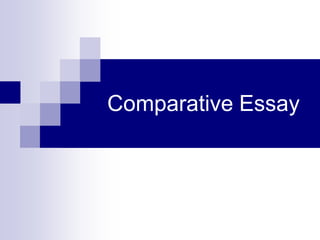
Comparing Merchant Status in Ottoman and Tokugawa Empires
- 2. Introduction Paragraph Time Period In the time period 1450-1750, merchants were viewed differently among rulers from civilization to civilization. In Ming China and Ottoman Empire, both had absolute rulers who had their own opinions about the merchant class in their population. Ming China and Ottoman Empire are different in that Ming China looked down upon their merchants whereas the Ottomans respected theirs, however, both civilizations’ merchants were wealthy despite how the rulers viewed them. Missing Causation
- 3. Thesis Statement The Ottoman Empire had a great relationship with the merchant class, encouraged trade, and gave merchants benefits, while Tokugawa Japan strongly discouraged trade, looked down upon the merchant class, and isolated themselves from the rest of the world. Missing Causation and Similarity
- 4. Thesis Statement In Tokugawa Japan merchants were given less rights and lower status due to Neo-Confucian governing policies and in the Ottoman Empire merchants were treated well due to their religious connections to the prophet Muhammad. Missing Similarity
- 5. Thesis Statement In Ming China, with the exception of Yonglo, the merchants were frowned upon for both religious and economic reasons. However, in the Ottoman Empire merchants were loved and even given special privileges by the sultans due to Islamic beliefs. Missing Similarity
- 6. Thesis Statement The Ottoman Sultan and the Tokugawa Shogun both influenced and regulated trade, however, Ottoman Islamic beliefs and centralized location created a positive view of the merchants and a policy of trade while Confucian ideals and a protected location created a negative view of merchants and a policy of isolation. Despite these differences each policy had a positive impact on their respective society.
- 7. Sample Essay: Intro and Thesis During period 4 (1450-1750) a new set of Empires were founded and interactions between societies were formed again. Trade routes continued flourishing and merchants gained enormous wealth if they were successful. In two such empires, the Ottoman and Tokugawa Japan, the trading class had a unique relationship with their ruler. Both Empires effectively monitored and controlled their traders with their extensive bureaucracy but differed in where traders were placed in society due to their respective religions, Islam and Confucianism and geographic locations.
- 8. Sample Essay: Body Paragraph 1 For merchants in both Japan and the Ottoman Empire bureaucracy was built to ensure fair trades and prevent the evasion of taxes. The Ottomans for example, levied tariffs on foreign goods and provided for inspections on the goods that were brought into the Empire. In this way merchants would not cheat the government. While trade was more limited in Tokugawa Japan, similar restrictions were set on traders. They were to be inspected periodically in order to ensure the proper taxes had been paid and no illegal trades had been made. Thus, in both the Ottoman Empire and Tokugawa Japan traders were regulated with their respective government leaders.
- 9. Sample Essay: Body Paragraph 2 While both societies regulated trade, Japanese traders faced many more restrictions. After a turn inward during period 4, merchants were restricted to trading only with the Dutch, Chinese, and some Koreans. Such trade only took place in Nagasaki Bay. Also, trade with the Dutch only occurred a maximum of once a year. This difference comes from two factors. One, traders were considered a threat to Japanese society, and the Shogun was concerned of a foreign invasion. Secondly, borrowed Confucian values put traders on the lowest part of their society below farmers and peasants. Analysis
- 10. Sample Essay These factors were nearly the opposite in the Ottoman society. Unlike their Japanese counterparts, the Ottomans were Muslim. The Islamic tradition teaches that their Prophet Muhammad was a trader. Therefore, merchants have a much increased social standing. This coupled with an empire that effectively served as a middle man for the Silk Road trade created an empire extremely tolerant and accepting of traders. Thus, while traders faced restrictions for these Analysis differences they were not as severe.
- 11. Sample Essay This point lends itself to one final difference: geographic location. Being a group of islands, Japan had little benefit from trading in a terms of sustenance, most goods could be produced domestically. This reason further eroded the standing of merchants in Tokugawa Japan. The Ottomans on the other hand focused on expansion, not nurturing domestic markets. This, in addition to their key location as the link between Europe and the lucrative silk routes forced a reliance on traders. In this situation, the relationship between merchants and government only increased.
- 12. Conclusion Overall, during the 4th period interactions between peoples expanded across the globe. A complex network of trade that linked sellers of silk in Ming China with buyers in Europe developed and lead to the rise of a powerful class of merchants. In two such empires, the Ottoman and the Tokugawa, traders were restricted by government overseers and investigators, in addition to tariffs, but because of differences in geographic position and religion the relationship between merchant and rulers was very different. In Japan, it’s island geography and classic Confucian values created a superior and inferior relationship between Shogun and merchant. In the Ottoman Empire, Islam and it’s “Middle Man” geography lent itself to less restrictive and more fair relationship between the Sultan and traders.
